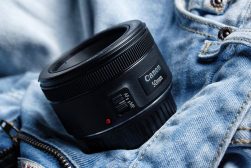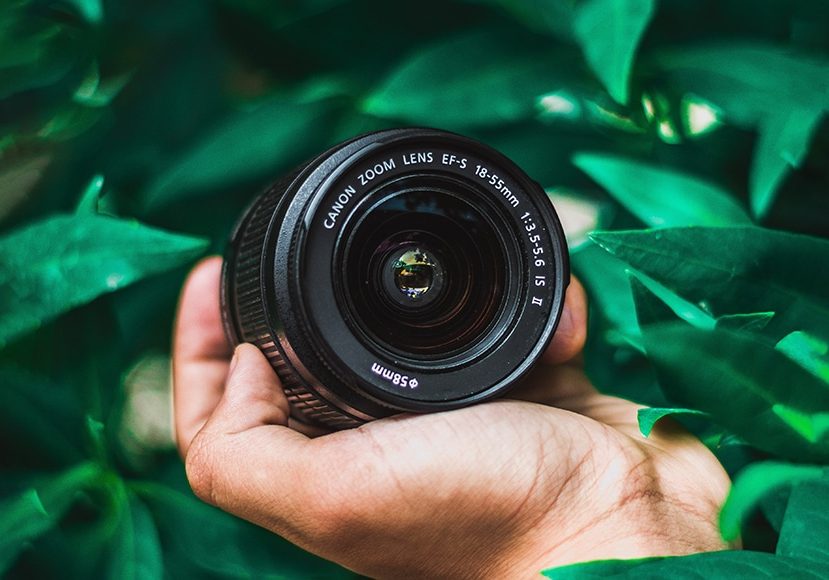
Should You Use a Kit Lens? (Pros, Cons & Tips)
What are the pros and cons of kit lenses? How can you get the most out of yours? Check out our guide with useful tips, tricks and advice to find out!
If you’ve ever owned a DSLR camera, then you’ve most likely owned a kit lens. They’re a ubiquitous piece of camera kit – you could say owning an 18-55mm kit lens is a rite of passage for any photographer.
The general view of experienced photographers may be that a kit lens doesn’t offer a lot of value. But for beginners, a camera with a kit lens is still an attractive proposition.
So in this article, we’ll take a look in-depth at the strengths and weaknesses of kit lenses and explore how you might get more out of one.
Let’s begin with a quick definition…
Table of Contents
What Is a Kit Lens?
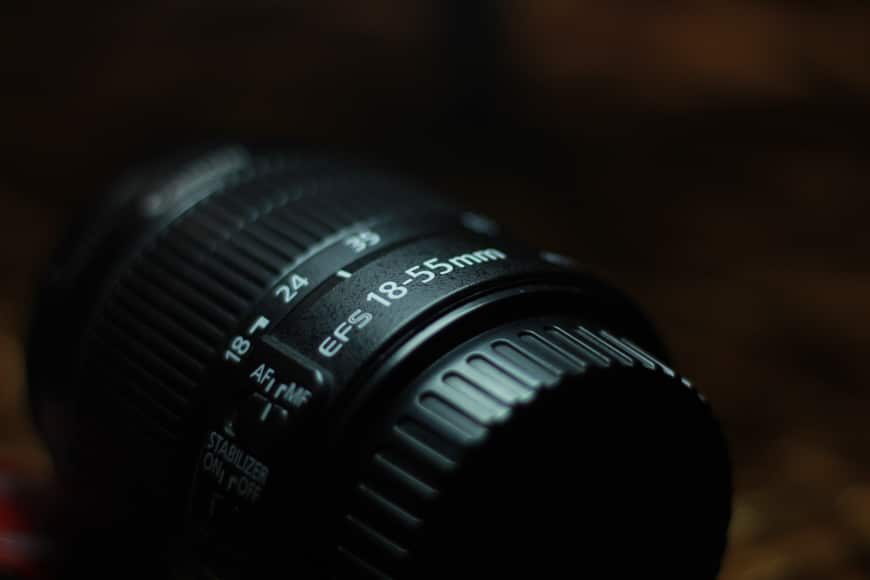
Credit: Mohit Pathak
A kit lens, if you’re looking for the most simple definition, refers to a lens that comes as part of a ‘kit’, bundled with a camera. A kit lens can be any focal length, aperture, optical quality and performance.
However, most commonly, we think of kit lenses as inexpensive. We probably view them as a stop-gap to be discarded when the photographer is able to invest in more lenses for their new camera.
But are there any characteristics that really shout out ‘kit lens’ above all others? Step forward the 18-55mm zoom lens, usually with a varying maximum aperture of f/3.5 – 5.6.
Why the 18-55mm? One reason is its versatility, with the focal length covering from the wide-angle 18mm (perfect for landscapes) up to 55mm (a focal length that can be used for portrait photography), with 35mm of course in between (ideal for street photography and more).
Take the HARD Photography Quiz! 🤯
Now it's time to really test your photography knowledge!
(99% of people can't get all the questions right...)

However, the 18-55mm lens is not the only kit lens. You’ll find the full frame Nikon Z6 bundled with the excellent 24-70mm f/4 lens for example – so the more you spend on a camera body, the higher quality of kit lens on offer.
What is the difference between a kit lens and a prime lens?
A kit lens is almost universally a zoom lens, generally with a variable maximum aperture (though for more expensive options, they can occasionally have fixed apertures).
This is in contrast with a prime lens, which has a fixed focal length and a fixed aperture.
So, a kit lens example is an 18-55mm f/3.5-5.6 – whereas a prime lens example is a 50mm f/1.8 lens.
What Is a Kit Lens Good For?

Nikon 18-55mm f/3.5-5.6
Though they often get a bad rap, kit lenses do offer some advantages:
- They’re usually small and lightweight. A kit lens is usually compact and light, making it the ideal first lens to own as you get to grips with your new camera. And as time goes on, it’s so handy to have a lightweight lens on hand, not only for everyday use but for travelling as well.
- They’re convenient. When you’re investing in a new camera system, you want to go out and start shooting with it right away! Adding on a kit lens allows you to do just that. You can continue to plan your full arsenal of prime and zoom lenses for your camera, all the while shooting across a varied focal range.
- They’re versatile. Kit lenses tend to be zoom lenses. They also usually cover the most commonly used focal lengths. This makes them really versatile for a range of different shooting situations.
- You can find your ideal focal length. As well as being versatile, zoom lenses have another advantage. What better way to road test focal lengths before you invest in more lenses? You might find a wide-angle like 24mm suits your style of photography, or you might find yourself loving 50mm.
- They’re affordable. We won’t pretend that a kit lens is the most high-quality lens you can buy for your new camera. However, camera manufacturers bundle kit lenses with their cameras for a very affordable price. As we’ve discussed, you’ll want to go out and start shooting right away when you buy your new camera. So, get a kit lens, start shooting and start getting to know your camera while you save up for other lenses.
- They’re perfect for learning to use your new camera. If you’re a beginner, kit lenses allow you to get shooting straight away. They also let you get to know your camera menu while taking photographs, from getting to know how to use shutter speed in conjunction with different focal lengths, to more general knowledge you need to become familiar with.
How to get the most out of a kit lens
Here are our top tips for how to get the very best from your kit lens:
- Be aware of your focal length. A kit lens usually has the benefit of allowing you to shoot very wide images. However, at its widest, it can lead to distorted images. Just zooming into the scene by a small amount – then adjusting your positioning to get wider – can lead to more pleasing images.
- Use the right aperture. Every lens has a sweet spot for sharpness. While shooting at the maximum aperture can help in low light, it can also lead to softness. With kit lenses, you’ll find that the best apertures for sharpness and avoiding soft images will be anywhere between f/5.6 and f/11. Try to stay within this range, as long as lighting conditions allow.
- Use image stabilisation. Shooting at narrower apertures will give you sharper images, however, it will mean you need to get your shutter speed and ISO settings right. Another way to get around narrower apertures is to utilise your lens image stabilisation. This will allow you to drop your shutter speed while still achieving sharp and steady images.
- Get close to your subject. Shallow depth of field is most easily achieved by shooting with wider apertures. However, kit lenses usually start at f/3.5 or even narrower apertures. So, to achieve shallow depth of field, try getting close to your subject to create a little background blur.
What Are the Disadvantages of a Kit Lens?
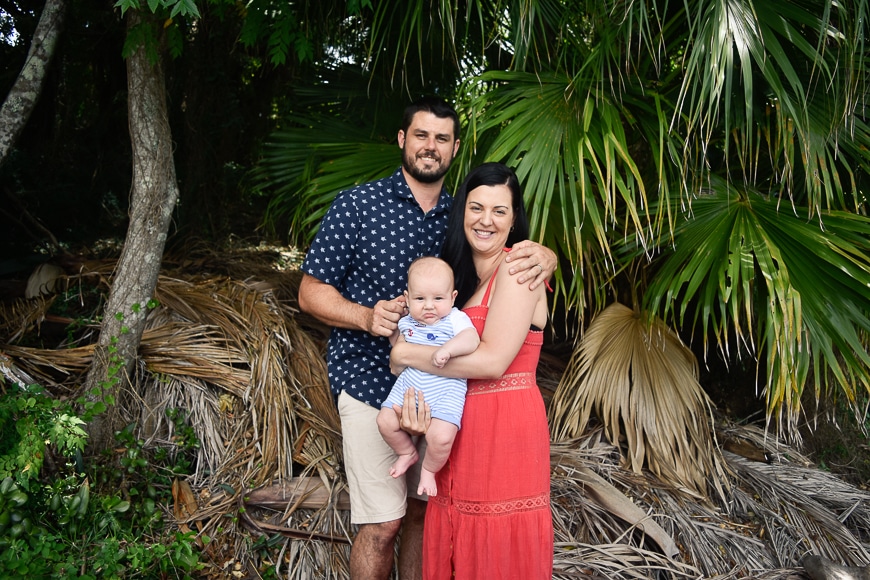
Nikon 18-55mm f/3.5-5.6
We’ve gone through the many positives of these lenses that come bundled with your camera – but here we discuss the possible disadvantages associated with them.
- The build quality of the lens – As we’ve discussed, kit lenses can be small and lightweight which makes them really handy additions to your camera bag. However, this is because they tend to be made out of plastic, without weather sealing. The lens mount may even be made of plastic. This is all to be expected of course – a cheaper lens will invariably be built to lesser standards than a more expensive one.
- Lesser optical quality – A kit lens and its optics will not use your camera’s technical capabilities to their fullest. For most lenses, you can expect them to allow your camera sensor to capture images using between 50 and 100% of its capabilities. However, kit lenses – particularly cheap 18-55mm lenses – can be far less than 50%. Poor optics can also lead to distortion and chromatic aberration.
- Inferior image quality – Lesser optical quality, in turn, leads to image quality being affected – particularly the sharpness of the images.
- Variable aperture zoom lens – A professional 24-70mm lens tends to be set at an aperture of f/2.8, allowing a lot of light into the lens. However, a kit lens usually starts at a narrower aperture and gets even narrower the more you zoom. This can affect the lens performance in low light. Also, it can really affect how a filmmaker might use the lens. Variable aperture would lead to issues with camera settings for videographers.
What Lens Should I Buy After a Kit Lens?
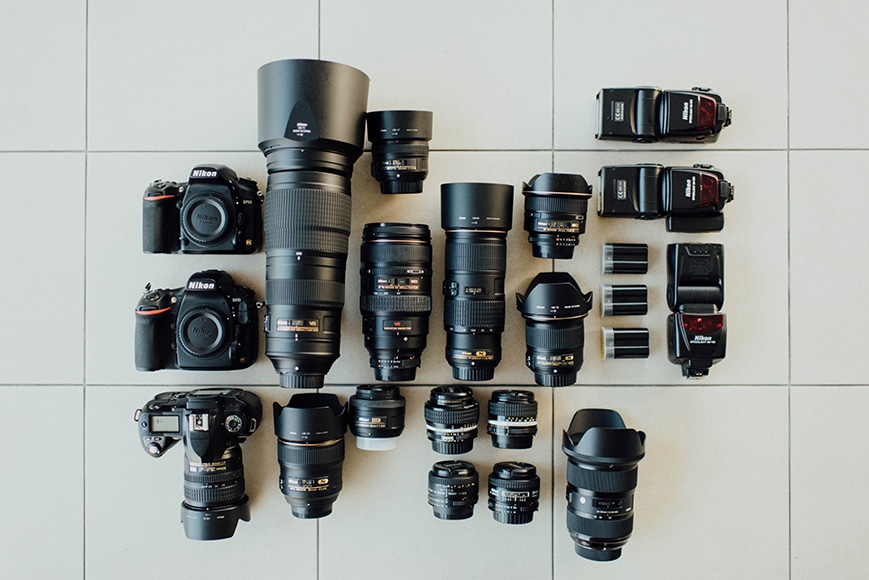
Credit: Chuttersnap
Below we recommend some lenses to consider when upgrading your kit lens.
- 50mm f/1.8 prime lens
Or, as it’s often called, the nifty fifty. Once you’ve mastered your kit lens, a 50mm prime is a logical next step. And the f/1.8 nifty fifty is another inexpensive choice many photographers turn to.
With a fast, wide f/1.8 maximum aperture, it allows for more creativity and better performance at low light. The shallow depth of field is also great for portraiture and creative bokeh effects.
The 50mm focal length is so versatile, perfect for many general photography styles. There’s an affordable 50mm for the 2 main camera brands: Canon EF 50mm f/1.8 and Nikon 50mm f/1.8.
- 24-70mm f/2.8 zoom lens
Often seen as a staple of any camera bag from enthusiast to professional, the 24-70mm f/2.8 is a great (but expensive) step up from a kit lens. So versatile in terms of focal length, you’ll find it gives increased image quality and much better low light performance – here are our reviews of the 24-70mm f/2.8 lenses from Sigma and Sony.
How Much Do You REALLY Know About Photography?! 🤔
Test your photography knowledge with this quick quiz!
See how much you really know about photography...

A more affordable option that can work on various bodies is the Tamron 28-75mm f/2.8, or alternatively, you can check whether there’s a 24-70mm f/4 equivalent that’s available for your camera brand, such as this one from Sony.
- 35mm prime lens
If you find yourself often shooting at wider focal lengths than 50mm, a 35mm prime lens would be a sound investment.
Nikon offers a great 35mm f/1.8 for both its crop sensor and full-frame cameras, and you can find something similar for the other major brands.
Final Words
We hope you’ve enjoyed our guide to kit lenses. If you’re a beginner considering buying your first camera, you can now see the many benefits to adding a kit lens to your camera bundle.
Or if you’re a more experienced photographer with a kit lens at home – whether it came with a cropped sensor or full-frame camera, DSLR or mirrorless – perhaps you might take it with you on your next day trip or the next time you travel.
As we’ve discussed in this guide, kit lenses are versatile, lightweight, and useful for any level of photographer.
We’d love to hear what you think of this article and also hear more about your experiences of shooting with a kit lens. Please leave any comments below!

Check out these 8 essential tools to help you succeed as a professional photographer.
Includes limited-time discounts.










